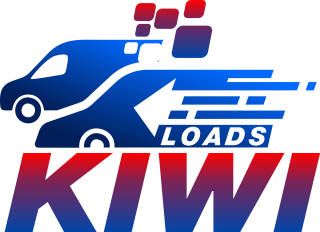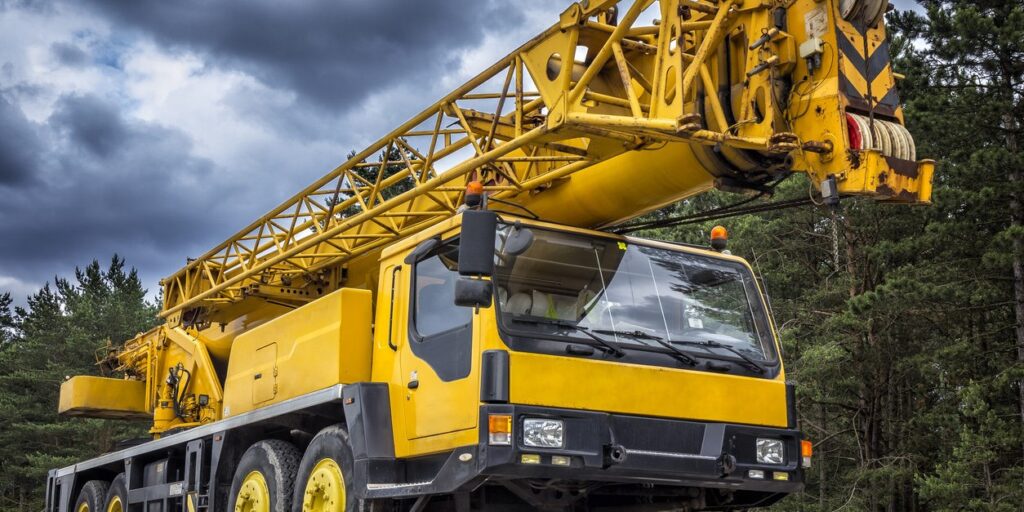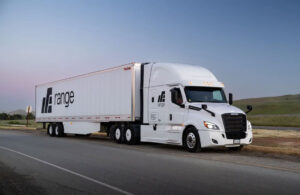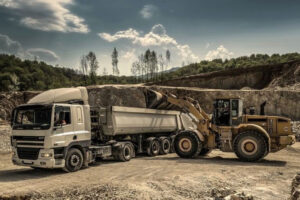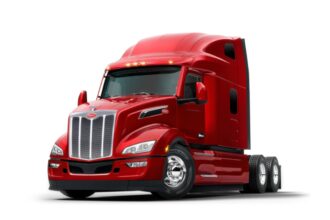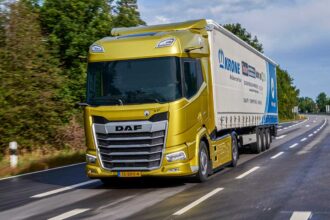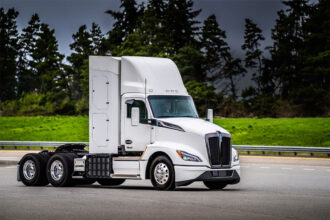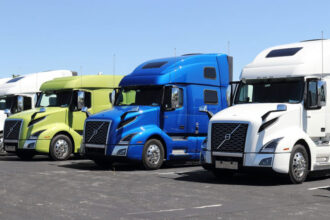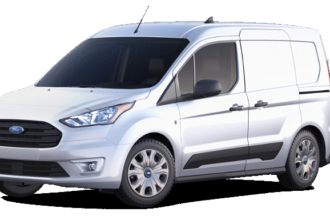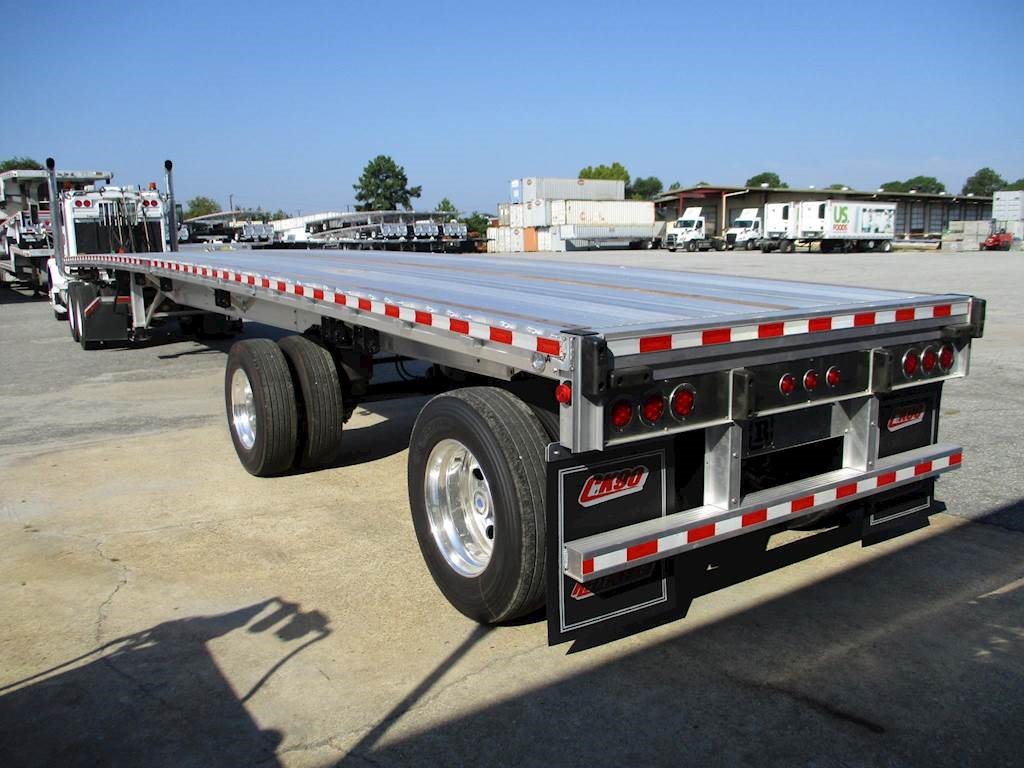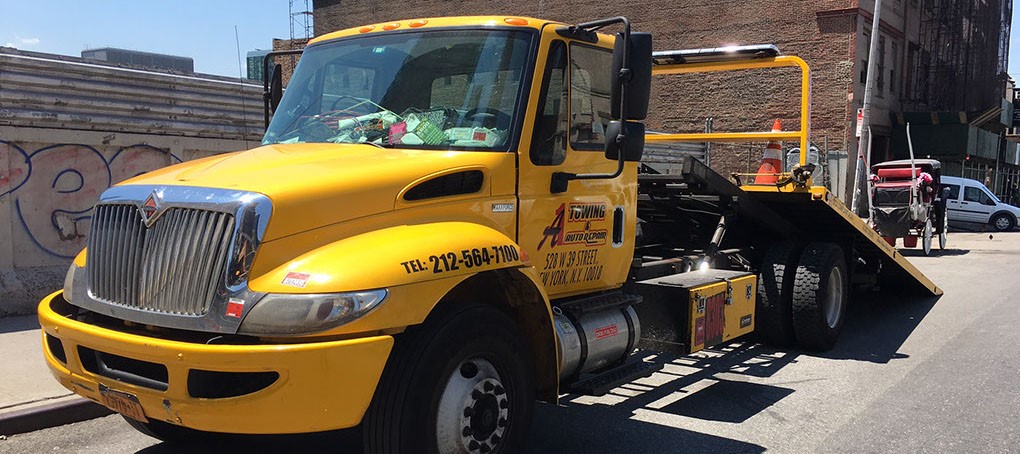Table of Contents
Introduction
A crane truck, alias truck-mounted crane, combines the transport capabilities of a truck with the lifting abilities of a crane, making it versatile for various tasks. The crane truck’s applications range from lifting and moving heavy loads, such as construction materials and shipping containers, to more complex tasks like equipment installation and rescue operations. However, operating crane trucks requires caution due to safety concerns to load weight and height clearance near bridges and power lines.
Crane trucks come in different types and sizes, categorized by factors like lifting capacity and crane type. There are small, medium and large crane trucks that carry between 20 to 50 tons. Also there’s the telescopic, knuckle boom and lattice boom crane trucks
Several reputable manufacturers offer crane trucks, with models like Manitex, Terex, National Crane, Altec, and Link-Belt. Prices vary depending on specifications, ranging from $100,000 to over $1 million for new models. Used crane trucks can also be cost-effective but require thorough inspection.
1. Understand the Construction Industry
Understanding construction sector needs is vital when starting a crane business to assess if there is sufficient local demand and gaps you can fill. Research determines if your competitors already meet needs or dissatisfaction exists presenting opportunities.
- Reveals if adequate demand and chances of securing business exist in your area
- Identifies potential customer pain points
- Enables data-driven decisions
- Allows tailoring your services and marketing to meet needs
- Provides insights on pricing, competitors, and partnership opportunities
- Needs significant time and effort required to gather comprehensive data
- Struggle with dynamic nature of the market makes data collection
- Lack of broad information
- Lack of access to certain data sources as a new player
- Survey contractors, builders, tradesmen to learn about equipment needs
- Monitor construction permitting to gauge project pipeline/demand
- Identify trends in types of equipment
- Research pain points and dissatisfaction with existing crane companies
- Determine if certain crane types or services are lacking
- Adapt offerings and marketing accordingly to fill gaps
- Check OSHA and state boom truck operation regulations
>>>MORE: How To Start a Crane Truck Business
2. Identify the Type of Crane you Need
Choosing the right type of crane is essential for construction projects but can be complex given the many options, such as tower cranes for high-rises or crawler cranes for terrain versatility. Providing guidance on selection factors, common crane types, and working with rental experts ensures projects choose ideal models to meet needs efficiently and safely.
- Explains key criteria like load size, duration, transportation, and site conditions
- Describes the most common crane types like tower, crawler, truck, and boom trucks and their best uses
- Advises consulting rental specialists for recommendations for each job
- Helps avoid costs and delays from using wrong crane types for specific projects
- Promotes safety by matching cranes to loading requirements
- Have inadequate experience picking ideal crane types
- Loose focus on crane costs rather than value, fit, and safety
- Consider job duration and load sizes when choosing cranes
- Factor in transportation logistics and site layout conditions
- Get expert input from crane rental companies on best options
- Follow manufacturers’ specifications for safe working capacities
- Match crane capabilities closely to project needs
3. Raise your Capital
The decision to explore this on your checklist arises from the need to secure capital for launching a crane rental business, a venture that demands significant startup investment. Managing startup expenses becomes crucial in ensuring a smooth establishment, encompassing crane procurement, storage facilities, and workforce requirements.
- Prioritize prominent brands and high-quality cranes for a successful enterprise.
- Build a diverse crane fleet encompasses various crane types
- Choose used cranes reduces initial expenditures without compromising operational excellence
- Lack substantial upfront investment.
- Lack of storage facilities and hiring personnel
- Incorporate an assortment of crane types, such as rough terrain and transport cranes, to diversify the client base and maximize job prospects
- Scrutinize used crane offerings, rigorously verifying maintenance histories and assessing equipment condition to gauge suitability for procurement
- Select reputable brands to amplify the reliability and longevity of the crane fleet
- Secure sufficient capital to enable the coverage of initial expenditures while sustaining the business until a stable revenue stream materializes
4. Get Necessary Licensing
Understanding OSHA crane operator certification requirements is crucial since improper operators without licenses pose serious risks. Outlining certification processes, accreditation, renewals, and varying state/local rules provides guidance for compliance.
- Prevents accidents by ensuring you’re a qualified operator
- Confirms which nationally accredited certification programs meet OSHA standards
- Clarifies certification types including licensing, military, and audited employer programs
- Notes some states and cities have additional licensing requirements beyond OSHA
- Helps employers budget and plan for training/testing costs
- Feel the complexity of varying federal, state and local operator requirements
- Experience the burden of renewal timelines and costs of testing/training on employers
- Struggle with keeping up with regulatory changes across multiple jurisdictions
- Mandate testing and certification for all crane operators, including those operating truck cranes.
- Include a written examination covering essential concepts and a practical operation test in the certification process.
- Ensure that accredited private certification programs adhere to OSHA’s stringent standards.
- Require operators to renew their certifications every 5 years to maintain their validity.
- Oblige employers to cover the mandatory costs associated with testing and training.
5. Get insurance
This arises from the critical need to understand and secure the appropriate insurance coverage for crane trucks, a fundamental aspect of managing and safeguarding a crane rental business. This exploration aims to ensure comprehensive risk mitigation.
- Ensure comprehensive coverage by adopting a multi-faceted approach
- Safeguard the vehicle with commercial auto insurance, covering accidents, and property damage
- Extend the protection to include equipment insurance
- Opt for inland marine insurance
- Rely on general liability insurance to cover damages or injuries not directly related to truck operations.
- Prioritize worker’s compensation insurance
- Take into account geographic location and business history as additional factors influencing insurance needs.
- Acknowledge the complexity of navigating this intricate insurance landscape.
- Prepare for potential variations in insurance costs based on specific circumstances.
- Emphasizing the importance of understanding the key components of crane truck insurance policies
- Enumerate the typical components of such policies, including commercial auto insurance, equipment insurance, inland marine insurance, general liability insurance, worker’s compensation insurance, and the option of umbrella insurance.
- Stress the need for tailoring insurance packages to match specific business needs and risk profiles, considering factors such as crane type, equipment value, operational areas, and historical accident records.
>>>PRO TIPS: Crane Truck Business Plan
6. Marketing
Starting a crane business presents a lucrative opportunity within the construction industry, making it an appealing choice.
- Emphasize the importance of establishing connections within the construction industry
- Stress the significance of prioritizing client satisfaction
- Recommend building a professional online presence, creating business cards
- Suggest offering initial discounts as a strategy to attract new clients
- Acknowledge the competitive nature of the crane industry and stress the importance of implementing effective marketing strategies to establish a strong presence and stand out from competitors.
- Highlight that the ongoing expenses related to maintaining and operating cranes can impact the overall profitability of the business, necessitating careful financial planning and management.
- Develop a comprehensive marketing strategy, including networking, client satisfaction, a professional online presence, and promotional discounts.
- Invest in a professional website and business cards to establish credibility.
- Prioritize high levels of client satisfaction to gain recommendations and foster long-term partnerships.
- Consider offering discounts to attract new clients and jumpstart business growth.
- Understand the steps to generate profits within the crane hire business, including sourcing cranes.
Overview of Crane Truck Business Checklist
While this nationwide growth trend is evident, its impact varies across different regions. Notably, the Midwest region of the U.S. witness the most significant surge in the value of new residential construction.
Starting and operating a crane truck business involves a series of crucial steps and considerations. It all commences with the development of a comprehensive business plan that delineates your objectives and financial forecasts. Navigating the legal landscape, including selecting an appropriate business structure and securing the necessary licenses and permits, is imperative for compliance.
Acquiring the right equipment and upholding its maintenance are fundamental, given that crane safety takes precedence. Effective pricing strategies and robust marketing endeavors are pivotal for attracting clients within the construction industry.
How to Choose Crane Truck
Here are essential steps to guide you in selecting the appropriate truck crane for your business, taking key factors into account:
- Determine lifting requirements
- Evaluate reach
- Assess mobility
- Know your space requirements
Pros & Cons of Crane Truck Business
Pros
- Attracts high demand
- Generates high profit margins
- Has low start-up costs
- Maintains low operating costs
- Acquires a diverse clientele
- Offers high-paying jobs
Cons
- Requires high initial investment
- Entails high insurance costs
- Exposes to high liability risks
- Faces high competition
- Requires mandatory training
- Is subject to strict regulations
>>>GET SMARTER: Crane Truck Business Accessories You Need to Succeed
What to Watch Out For
- Regulatory compliance
- Safety measures
- Insurance costs
- Market competition
- Equipment maintenance
- Economic factors
- Environmental concerns
- Job Site conditions
- Risks and liability
Pro Tips
- Implement predictive maintenance using sensor technology and data analysis
- Consider adopting eco-friendly practices by investing in hybrid or electric crane trucks
- Offer clients customization options for your crane services
- Utilize remote monitoring systems that allow you to track crane performance and health in real-time
- Implement digital record-keeping for maintenance logs, inspection reports, and safety compliance
- Conduct regular emergency response drills with your team to ensure everyone knows how to react in case of accidents or crises
- Invest in scheduling software that allows clients to book crane services in real-time through your website
- Pay attention to operator comfort by ensuring crane cabs are ergonomically designed.
- Consider using virtual reality (VR) simulations for operator training.
Recap
Starting a crane truck business involves understanding the construction industry, identifying the right type of crane, raising capital, obtaining necessary licensing, securing insurance, and implementing effective marketing strategies.
Pro tips include predictive maintenance, eco-friendly practices, offering customization, remote monitoring, digital record-keeping, emergency response drills, scheduling software, operator comfort, and virtual reality training.
